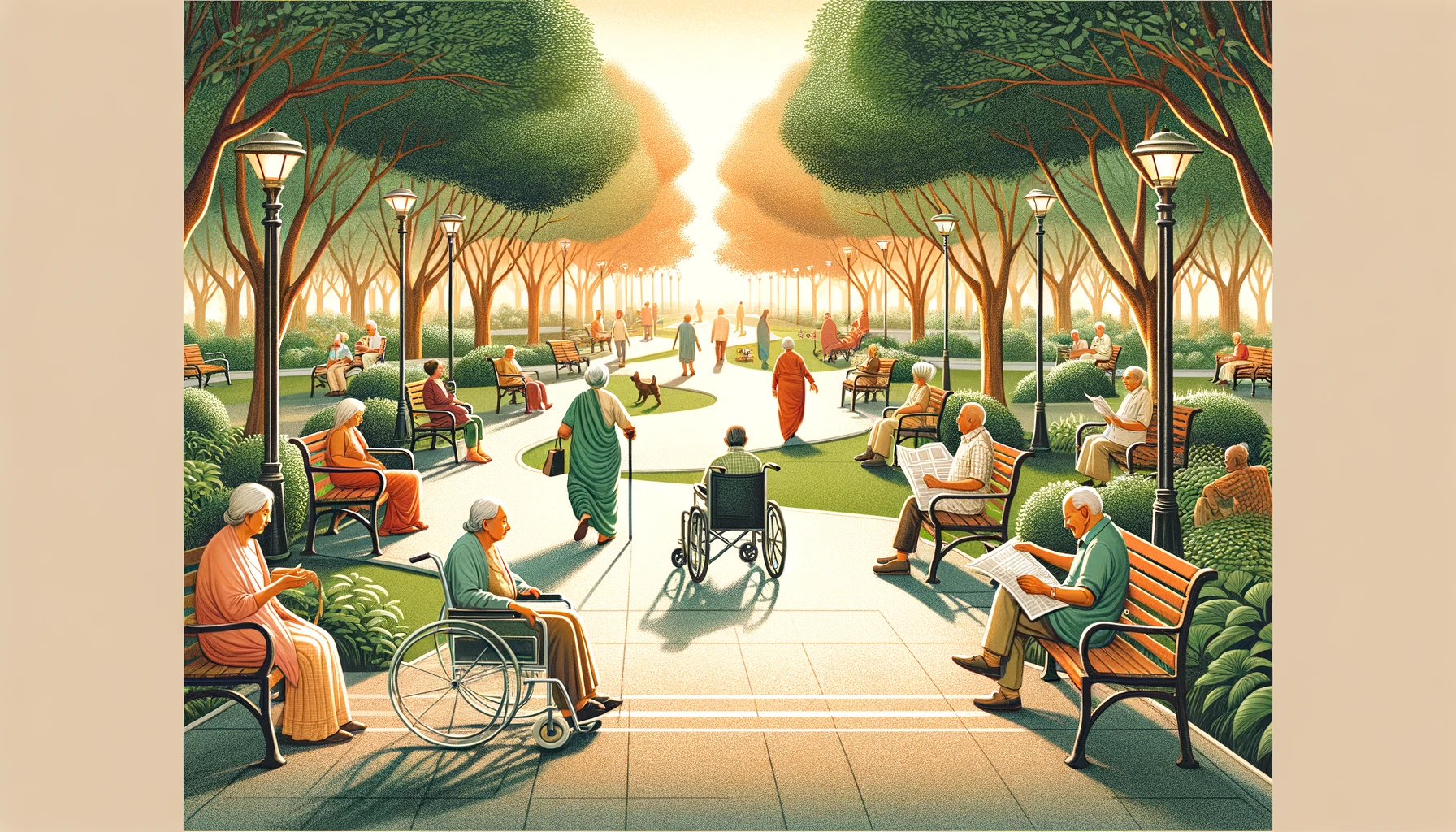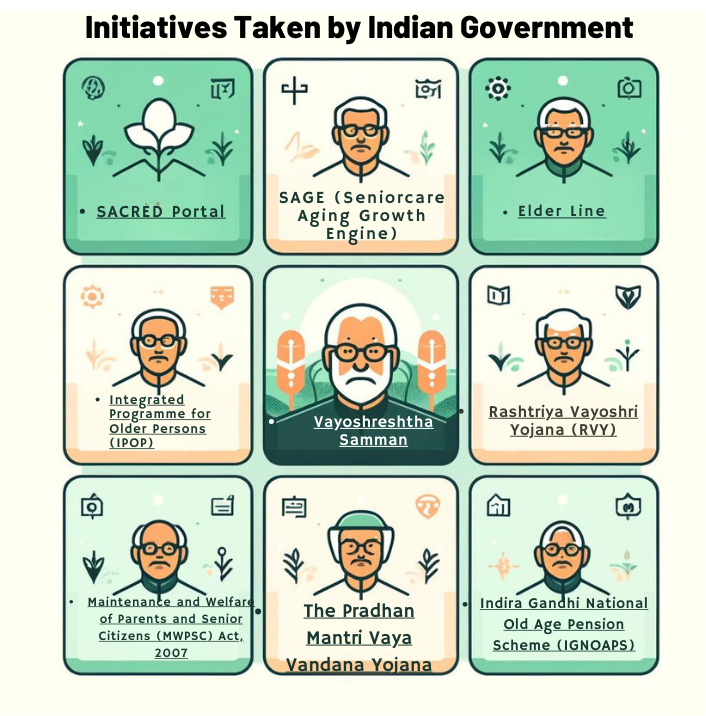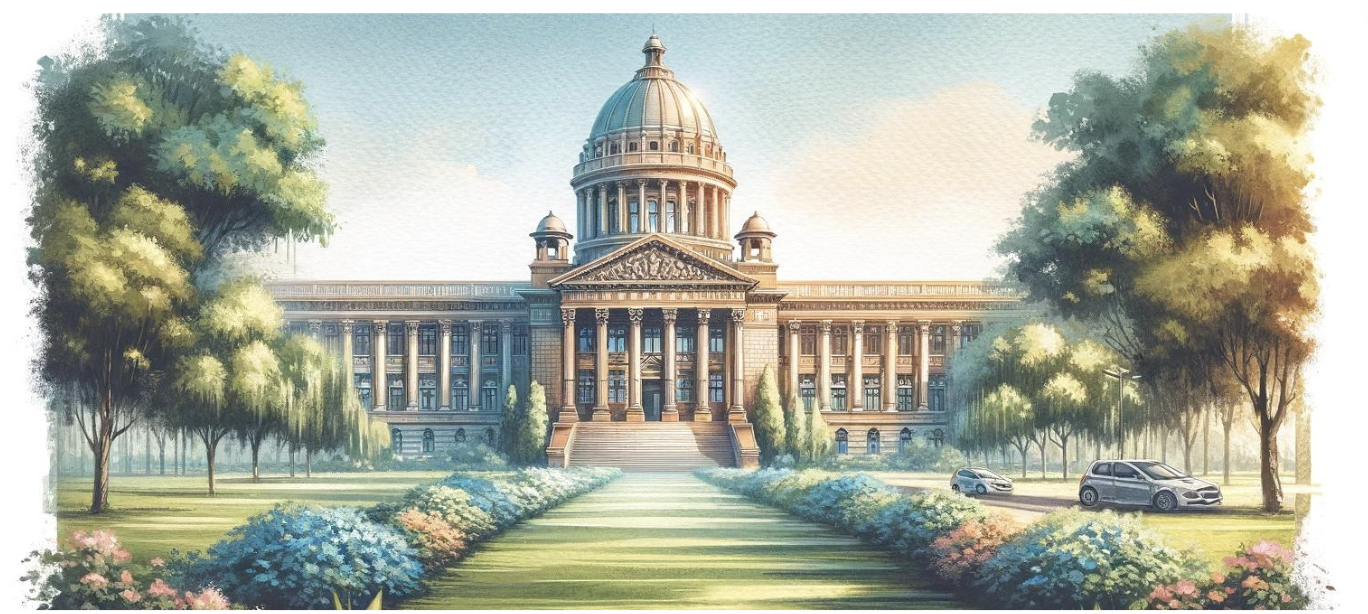
Introduction:
In India, a significant demographic shift is underway. The spotlight has long been on the youthful demographic dividend, but behind this focus lies an increasing population of the elderly, often overlooked. According to recent data, the number of individuals aged 60 and above is projected to rise sharply, necessitating urgent attention to their needs. This editorial delves into the challenges and necessities of senior citizen care in India. We explore the implications of this demographic trend and the critical need for comprehensive policy reforms to ensure dignified living conditions for our seniors, highlighting the interplay between societal trends and government responsibilities.
Origin of the Article
This editorial is inspired by the article “For Future Ready Seniors,” published in the Indian Express on April 29, 2024. It critiques the lack of focus on the escalating needs of India’s elderly population amidst the nation’s demographic transition.
Relevancy for UPSC Students:
For UPSC aspirants, understanding the dynamics of an ageing population is crucial. This topic is directly linked to GS Paper 2, focusing on government policies and their effectiveness. By studying this issue, students gain insights into social justice, welfare schemes, and the role of governance in enhancing the quality of life for vulnerable groups, equipping them with knowledge applicable in both prelims and mains examinations.

Navigating the Multifaceted Challenges Facing India’s Elderly
Healthcare and Accessibility Woes:
The swift rise in the elderly population in India presents a formidable challenge in providing necessary healthcare services that are quality-oriented, affordable, and accessible. Elderly individuals often require specialized medical services, ranging from home-based or teleconsultations to physiotherapy, mental health counseling, and extensive pharmaceutical support. However, India’s healthcare access and quality (HAQ) Index score stands at a concerning 41.2, considerably lower than the global average, reflecting significant inadequacies, especially in rural areas and smaller cities.
Social and Economic Dilemmas:
Social challenges compound the struggles of the elderly. Many face neglect from families, hindered further by low education levels, socio-cultural stigmas, and a general mistrust in institutional healthcare. These issues are exacerbated by inequity in access to critical facilities, making it difficult for the elderly to utilize necessary services effectively. Economically, many elders belong to lower socio-economic strata, trapped in a cycle of poor health and unaffordable healthcare, which not only limits their productivity but also impacts their mental and emotional well-being.
Inadequate Policy Support:
Despite initiatives like Ayushman Bharat and various public health insurance schemes, a report by NITI Aayog reveals that around 400 million Indians lack financial coverage for health expenses. The pension schemes, although intended to provide relief, often offer negligible benefits, such as a monthly pension as low as ₹350 to ₹400, which is not universally available.
Technological and Gender-Specific Challenges:
The concept of reskilling the elderly, similar to methods used in the military for integrating retired officers into civilian life, faces significant hurdles. It requires substantial technological support and is feasible only in limited sectors. Additionally, the demographic shift sees a distinct “Feminization of Ageing,” with more women outliving men, which brings unique challenges in catering to this subgroup’s specific needs.
Lack of Comprehensive Support Systems:
As the trend of elderly individuals living alone increases, there is a growing demand for senior-citizen housing and the development of security and health devices tailored to their needs. While startups are increasingly addressing these needs, the poorest segment of the elderly population often remains overlooked, lacking access to these emerging support systems.
Legal Safeguards for India’s Elderly: A Closer Look
Constitutional Commitments and Family Obligations:
India’s constitution, through Article 41 and Article 46, highlights the state’s role in ensuring the welfare of the elderly. While these directive principles are not directly enforceable by law, they establish a moral and policy framework for the government to consider elder care in legislation. The Hindu Marriage and Adoption Act of 1956, specifically Section 20, further mandates that it is a legal duty for children to maintain their aged parents, emphasizing family responsibility towards elderly care.
Statutory Provisions for Maintenance:
Section 125 of the Criminal Procedure Code empowers elderly parents to claim maintenance from their children, ensuring financial support. This provision is crucial in cases where elder parents are neglected or not adequately supported by their offspring. Moreover, the Maintenance and Welfare of Parents and Senior Citizens Act of 2007 strengthens these legal requirements, making it obligatory for children or heirs to provide for senior family members, thus safeguarding their financial and living conditions.
International Perspectives and Plans:
On the global stage, the rights and welfare of the elderly are also being addressed. The Convention on the Rights of Older Persons, proposed by the United Nations, aims to solidify international commitments to elder rights. Historical documents like the 1982 Report of the World Assembly on Ageing, and the Madrid International Plan on Ageing adopted in 2002, reflect extensive international dialogue and planning for senior citizen welfare. These documents have been instrumental in shaping policies that promote and protect the dignity and rights of the elderly globally, influencing national policies including those in India.
Enhancing Home-Based Care for India’s Elderly: Challenges and Strategic Solutions
Expanding Scope and Economic Efficiency: Home-based care for the elderly has significantly evolved, extending beyond basic assistance with daily activities to include routine nursing and specialized care services. A NITI Aayog report highlights that such care could potentially reduce up to 65% of unnecessary hospital visits, simultaneously cutting down hospital-related expenses by about 20%. This shift not only alleviates the strain on hospital resources but also provides comfort and personalized care within the familiar environment of one’s home.
Addressing Quality and Workforce Issues: Despite its benefits, home-based care faces notable challenges, including the lack of standardization and definition in care practices. There is a pressing shortage of trained and empathetic caregivers, and reports of mistreatment by families are common, reflecting a critical gap in the professional respect and protection afforded to these workers. Additionally, the cost of hiring home caregivers is considerable, predominantly provided by the private sector, which projects significant growth in this industry.
Strategic Recommendations for Improvement: To optimize home-based elderly care, it’s essential to officially recognize homes as legitimate venues for professional care and as workplaces for caregivers. This recognition should extend to the rights and safety of both the caregivers and the recipients. Moreover, home care should be distinctively defined from institutional care, with specific engagement terms and treatment protocols suited to home settings. Enhancing caregiver training and career development is also vital to meet increasing demands. Finally, establishing a comprehensive home-based care policy is crucial. This should include a registry of service providers, ensure transparency, accountability, establish grievance mechanisms, and provide adequate insurance coverage to foster a robust, dignified, and sustainable home care system for the elderly.
Comprehensive Measures to Enhance Elderly Well-being in India

Fortifying Financial Security:
A foundational step towards ensuring dignity for the elderly is safeguarding them from destitution. Implementing robust old-age pension schemes can significantly help in addressing health issues and combating loneliness, pivotal components of a wholesome social security system. Moreover, reforms in social security pensions should be a priority, providing comprehensive support including healthcare, disability aids, and opportunities for social engagement and recreation.
Adopting Best Practices from Regional Successes:
States like Odisha and Rajasthan have successfully implemented near-universal social security pensions. These models are exemplary and could be more broadly adopted if the central government revitalizes the National Social Assistance Programme (NSAP). This would facilitate a uniform approach across all states, enhancing the reach and effectiveness of pension schemes.
Ensuring Fair and Transparent Eligibility:
Improving pension accessibility involves adopting transparent exclusion criteria where eligibility for widows, the elderly, or disabled persons is presumed, subject to straightforward verification by local authorities. This method reduces the risk of exclusion errors, which currently affect many deserving individuals, despite the potential for some inclusion errors.
Addressing the Specific Needs of Elderly Women:
Policies must also recognize the unique challenges faced by elderly women, who often outlive their male counterparts and spend their later years alone. Special attention is needed to support these vulnerable women, ensuring they lead respectable, independent lives.
Legislative Action on Elder Care:
The Maintenance and Welfare of Parents and Senior Citizens (Amendment) Bill, 2019, which is yet to be passed, proposes critical regulations for home-based care, including the registration of service providers and setting minimum care standards. Passing this bill is crucial for ensuring quality care for the elderly.
Policy-Driven Support for Old Age Homes:
There is a pressing need for public policy to ensure old age homes are not only accessible but also elderly-friendly in their design and services. This involves thoughtful architecture, accessible facilities, and a nurturing social environment that are integral to all elderly care institutions, regardless of their pricing or exclusivity.
Creating an Elderly-Inclusive Society:
Finally, it’s essential to integrate elderly individuals into mainstream society rather than isolating them in old-age homes. This integration not only acknowledges their value as assets to society but also ensures they continue to have active, fulfilling lives. Promoting an inclusive society where the elderly receive proper care and respect is a testament to a civilization’s maturity and compassion.
The Way Forward
The way forward in enhancing senior citizen welfare in India involves a multifaceted approach that integrates policy, community, and technology. Firstly, policies need to be not only inclusive but also proactive, predicting the future needs of the aging population and adjusting accordingly. This includes expanding and refining pension schemes and healthcare services to ensure they are both accessible and comprehensive. Secondly, communities should be encouraged to foster environments where the elderly feel valued and actively engaged. This can be achieved through community programs that promote intergenerational interactions and recognize the contributions of the elderly. Lastly, leveraging technology to improve the quality of life for seniors—such as through telemedicine, mobile health monitoring, and smart home systems—should be accelerated. By combining these strategies, India can create a supportive ecosystem that not only cares for its elderly but also empowers them to live their later years with dignity and independence.
Conclusion
As India grapples with a rapidly aging population, it is imperative to adopt a holistic approach that goes beyond mere sustenance to ensuring a dignified and fulfilling life for its senior citizens. The journey towards ‘Ageing Gracefully’ requires concerted efforts from both governmental and societal fronts to implement robust social security systems, refine legal frameworks, and foster an inclusive community that values and supports its elderly. By embracing best practices, improving accessibility to quality care, and promoting socio-economic security, India can ensure that its seniors not only live longer but also live better. Embracing these challenges as opportunities to enhance the welfare of our elderly will not only honor their contributions to society but also enrich the social fabric of the nation. Let us commit to a future where every senior citizen in India can look forward to aging with grace, supported by a compassionate and proactive system.

